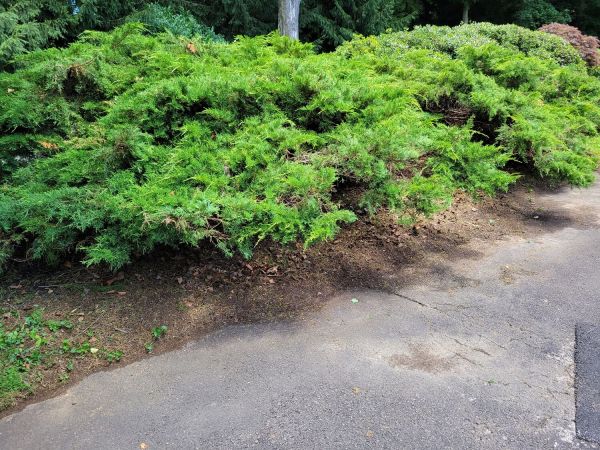The Ideal Time for Corrective Pruning
Corrective pruning is a crucial aspect of plant care, and the timing of this activity can significantly impact the health and growth of plants and trees. Choosing the ideal time for corrective pruning ensures trees can recover and heal properly, reducing disease risk and promoting healthy regrowth. Pruning at the incorrect time, on the other hand, can lead to increased vulnerability to pests, diseases, and environmental stress, ultimately hindering the tree’s overall health and appearance.
The best times for pruning can vary depending on the season and the tree species.
- Late winter/early spring (January to March) is an ideal time for corrective pruning for most plant species. This time is the dormant season for most plants, so energy is not being spent on growing. As a result, pruning a mature tree during late winter means that the tree is more likely to heal after pruning because there is no sharing of nutrients between healing and growing new branches or leaves.
- Late spring/summer is generally not the best time for corrective tree or shrub pruning for most types of trees. Trees and shrubs are actively growing during this time, so spring and summer pruning can stunt growth, lead to diseased branches, and slow wound healing. Having pruning done in the winter creates the ideal conditions for spring growth.
Regarding specific tree species:
Evergreen trees: Corrective pruning can be done at any time of year except for autumn because pruning during autumn can stimulate new growth that may not have time to harden off before winter, making the tree vulnerable to frost damage. The best time to prune evergreen trees is in late winter or early spring to avoid sap loss as sap flow is generally lower during the dormant season.
Fruit trees: Most fruit trees should be pruned in late winter or early spring, just before the buds swell. Pruning during this period can help promote healthy growth and fruit production for the upcoming season. Pruning just before bud swell is ideal, because identification of dormant buds is easier and this allows for proper shaping and thinning. On the other hand, some fruit trees, such as peaches and nectarines, are best pruned in late summer or early fall. Pruning during this period can help reduce the risk of diseases such as peach leaf curl, which is best managed by pruning during the late summer or early fall when the trees are dormant but after the risk of infection has passed.
Flowering shrubs: Most flowering shrubs should be pruned after blooming. Pruning after flowering allows you to enjoy the blooms and also protects next year’s flower buds, which often form soon after the current year’s flowers fade. Some shrubs, such as hydrangeas, are best pruned in late winter or early spring depending on their specific type and blooming habit.
An essential aspect of plant health care is considering the specific needs of different plant species when determining the ideal time for pruning. By understanding various plants’ seasonal requirements and growth patterns, certified arborists can ensure that corrective pruning efforts are effective and supportive of optimal plant health.
The Consequences of Neglecting Tree Pruning
Neglecting the need for corrective pruning can have dire consequences for long-term tree health and aesthetic appeal. Trees can suffer from reduced aesthetics and structural integrity without regular pruning, causing unbalanced growth and potential aesthetic damage. Neglected trees are prone to deadwood accumulation, suckers, and water sprouts, which detracts from the overall appearance and can also lead to increased susceptibility to disease and pests.
Furthermore, overcrowded branches can lead to wounds and damage, leading to a weak branch structure and potential safety hazards. Weak or dead branches are also more prone to breaking, which can lead to falling branches that risk property and personal safety.
In addition, neglecting pruning can result in stunted growth and a weak root system, ultimately reducing the tree’s lifespan. By ignoring the need for corrective pruning, homeowners are essentially sentencing their trees to a future of compromised health and vitality. Regular pruning helps ensure the longevity and well-being of your trees.
Professional Corrective Pruning

When pruning trees, hiring a professional, certified arborist has distinct advantages over attempting the task yourself. Corrective pruning requires specific knowledge of pruning techniques and cuts, tools, and methods that preserve the health of a tree.
Professional tree care experts have the knowledge and experience to assess the needs of each tree correctly and use proper pruning techniques. This results in healthier, more vibrant trees that require less maintenance over time, ultimately saving you money.
Moreover, professional tree pruning can prevent costly damage caused by improper techniques and prolong your trees’ life. Professionals can also identify and correct any existing issues while pruning, helping to ensure your trees’ long-term health and vitality.
Investing in professional tree care services saves you time and money in the long term and ensures that your trees receive the best care possible. You can enjoy healthy, well-maintained trees for years with professionals’ expertise and attention to detail.
Get Expert Corrective Pruning from Burkholder PHC
Are you struggling to keep your plants healthy and thriving? Burkholder PHC’s certified arborists and plant health care experts are here to help you, whether you need advice on the ideal time for corrective pruning for your trees and shrubs, tree care, or plant care and maintenance. With years of hands-on experience, we can provide you with the guidance and support you need to ensure the health and longevity of your plants. We offer a free consultation to get you started on the right path. Take the next step towards healthier, more beautiful greenery by booking a consultation with us today.

